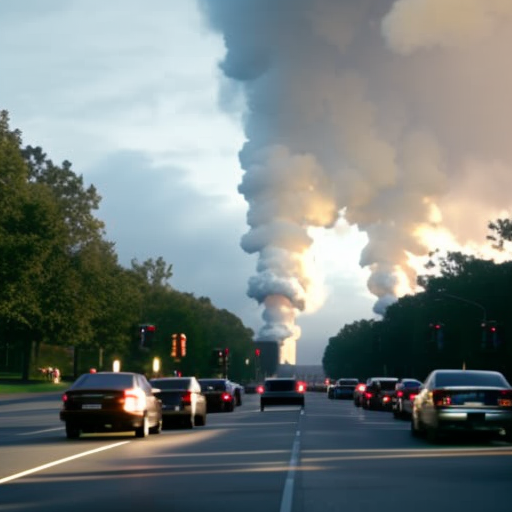
The State of Air Quality in the US
The American Lung Association recently released its 25th annual “State of the Air” survey for the US, revealing that 40% of the population is living with poor air quality. This represents an increase of nearly 12 million people compared to last year’s survey. The report also highlights that more individuals than ever before have experienced “very unhealthy” or “hazardous” air quality days. It is important to address air pollution as it can worsen medical conditions such as asthma and psoriasis, and also have adverse effects on pregnancies.
The Medical Society Consortium on Climate and Health has observed a rise in preterm births during periods of heavy wildfire events. They have noticed that when there are weeks of poor air quality, more pregnant individuals come in and deliver before 37 weeks. These individuals are counseled about the risk factors associated with heat and smoke during pregnancy.
Top Five US Cities Most Polluted by Year-Round Particle Pollution:
- Bakersfield, CA
- Visalia, CA
- Fresno-Madera-Hanford, CA
- Eugene-Springfield, OR
- San Jose-San Francisco-Oakland, CA
Top Five Cleanest US Cities (listed in alphabetical order):
- Bangor, ME
- Johnson City-Kingsport-Bristol, TN-VA
- Lincoln-Beatrice, NE
- Urban Honolulu, HI
- Wilmington, NC
To the north, Canada’s 2024 wildfire season began one month earlier than last year. It is expected to be even worse than the previous year’s blazes, which devastated millions of hectares and released smoke, carbon, and other particulates into the atmosphere.
Sources:
- www.lung.org/
- gispub.epa.gov/…
- www.nbcnews.com/…
- www.nbcnews.com/…
- hazards.fema.gov/…
- news.ubc.ca/…
- nationalpost.com/…
SDGs, Targets, and Indicators
| SDGs | Targets | Indicators |
|---|---|---|
SDG 3: Good Health and Well-being |
|
|
SDG 11: Sustainable Cities and Communities |
|
|
SDG 13: Climate Action |
|
|
Analysis
1. Which SDGs are addressed or connected to the issues highlighted in the article?
The issues highlighted in the article are connected to SDG 3: Good Health and Well-being, SDG 11: Sustainable Cities and Communities, and SDG 13: Climate Action.
2. What specific targets under those SDGs can be identified based on the article’s content?
Based on the article’s content, the specific targets that can be identified are:
– Target 3.9: By 2030, substantially reduce the number of deaths and illnesses from hazardous chemicals and air, water, and soil pollution and contamination.
– Target 11.6: By 2030, reduce the adverse per capita environmental impact of cities, including by paying special attention to air quality and municipal and other waste management.
– Target 13.1: Strengthen resilience and adaptive capacity to climate-related hazards and natural disasters in all countries.
– Target 13.2: Integrate climate change measures into national policies, strategies, and planning.
– Target 13.3: Improve education, awareness-raising, and human and institutional capacity on climate change mitigation, adaptation, impact reduction, and early warning.
3. Are there any indicators mentioned or implied in the article that can be used to measure progress towards the identified targets?
The article does not mention or imply any specific indicators that can be used to measure progress towards the identified targets.
SDGs, Targets, and Indicators
| SDGs | Targets | Indicators |
|---|---|---|
SDG 3: Good Health and Well-being |
|
|
SDG 11: Sustainable Cities and Communities |
|
|
SDG 13: Climate Action |
|
|
Behold! This splendid article springs forth from the wellspring of knowledge, shaped by a wondrous proprietary AI technology that delved into a vast ocean of data, illuminating the path towards the Sustainable Development Goals. Remember that all rights are reserved by SDG Investors LLC, empowering us to champion progress together.
Source: dailykos.com

Join us, as fellow seekers of change, on a transformative journey at https://sdgtalks.ai/welcome, where you can become a member and actively contribute to shaping a brighter future.






